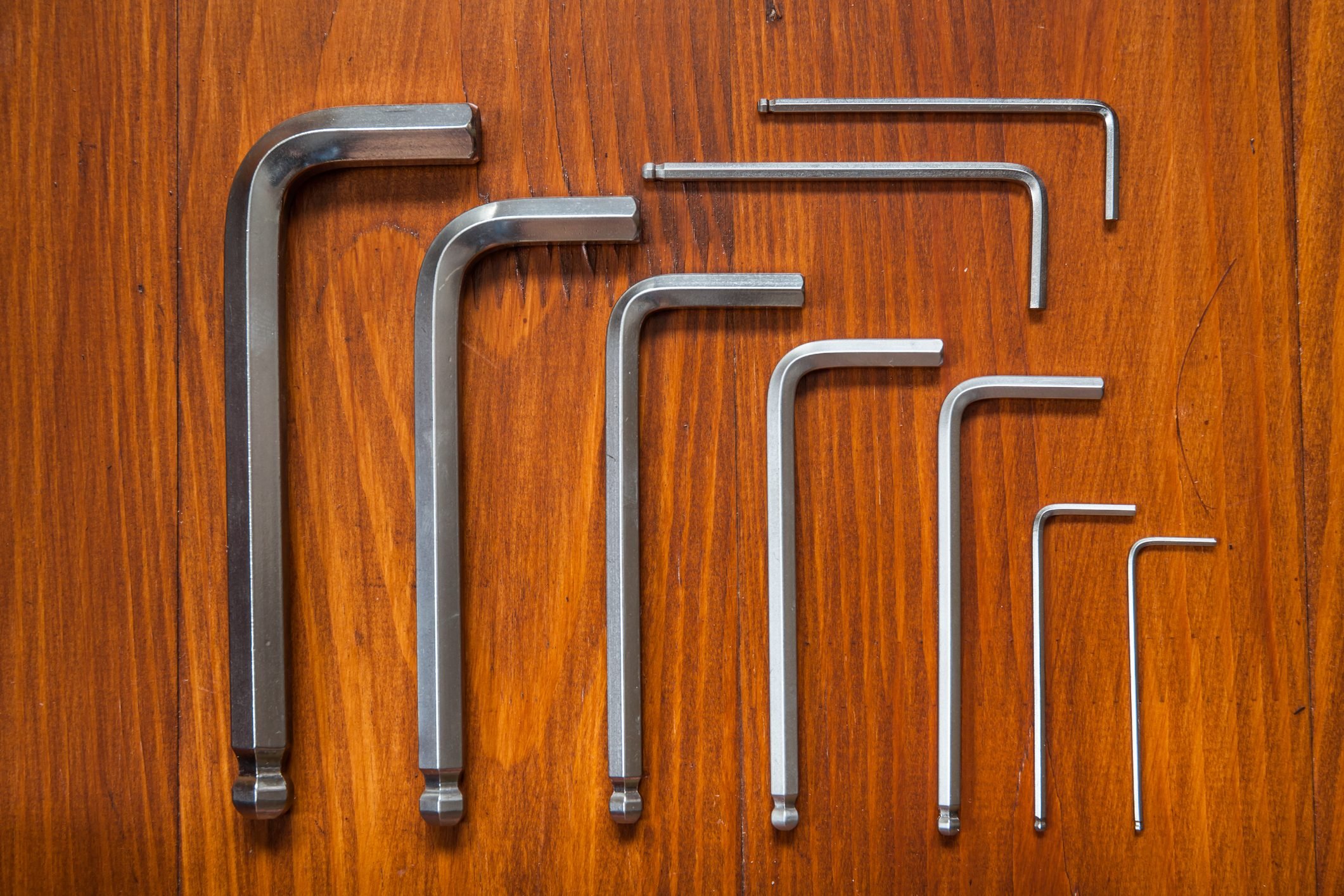If you're working with hex fasteners, whether that's furniture assembly or bicycle repair, you're going to need an Allen wrench.

Homeowner’s Guide To Allen Wrenches

Even if you’ve never bought an Allen wrench, chances are you probably have one or two lying around the house. These are the small L-shaped hand tools that come free with most flat-pack furniture you assemble yourself.
Although they might seem like an afterthought, they’re actually more essential than you might think. They allow you to work with hexagonal screws and bolts that require an extremely precise fit, unlike Phillips or slotted fasteners that can be loosened or tightened with a pocket knife or house key in a pinch.
On This Page
What is an Allen Wrench?
An Allen wrench, AKA an Allen key or hex key, is a small hand tool used to fasten screws or bolts with a hexagonal socket. Either end usually works, although some sets only have one end.
This hexagonal shape provides six points to apply pressure to the fasteners, making them more efficient. It’s also nearly impossible to strip the fastener.
Who’s Allen?
While hexagonal wrenches were around in the 1800s, William G. Allen patented the design for hex screws in 1910. His name became synonymous with the wrench as well.
Using an Allen Wrench
It’s easy: Place one end into the head of the hex fastener and turn with the other. It may take some trial and error to find the correct fit, which is why sets with multiple sizes are so important.
In our experience, the longer end is better for precision or tough-to-reach fasteners. The shorter side gives you a longer handle to generate more leverage for stubborn fasteners.
Allen Wrench Sizes
Allen wrenches vary in size, from tiny options for electronics to large ones for machinery and automotive work.
Only the exact wrench size can be used on a fastener, unlike screwdrivers that can turn fasteners slightly larger or smaller. That’s why sets of Allen wrenches are so popular. Using the wrong Allen wrench can easily strip the fastener or damage the wrench.
What to Consider When Buying Allen Wrenches
Although all Allen wrenches do the same job, there are some key differences you need to know.
- Size: Allen wrenches are available in SAE or metric sizes. If you’re not sure which you need, go with a set that has both. This won’t cost much more and ensures you’re covered for a wide range of tasks or projects.
- Material: Most are made of alloy or carbon steel. Higher-end models feature chrome vanadium steel, which is stronger and better suited for motorcycle or heavy machinery work.
- Handle: While L-shaped options are the most common, you can also find Allen wrenches with T-handle designs. These are longer and let you turn them with your palm. P-handle designs with plastic or rubber handles make for even more comfortable turning.
- Set vs. single: Unless you have a specific size fastener you’re working on, it’s good to go with a set instead of a single wrench. Sets are relatively affordable. In my experience, you can never have enough sets hanging around.
- Organization: To make sure you don’t lose your Allen wrenches, especially going from jobsite to jobsite, buy a set with an organizer. Some are even permanently set in a pocket-knife-style handle, although these aren’t as easy to fit into tight spots as individual wrenches. If you know you’ll only use your wrenches in one place, you can get away with a set that fits into a stationary base. These are more convenient for grabbing wrenches quickly but don’t travel well.




















